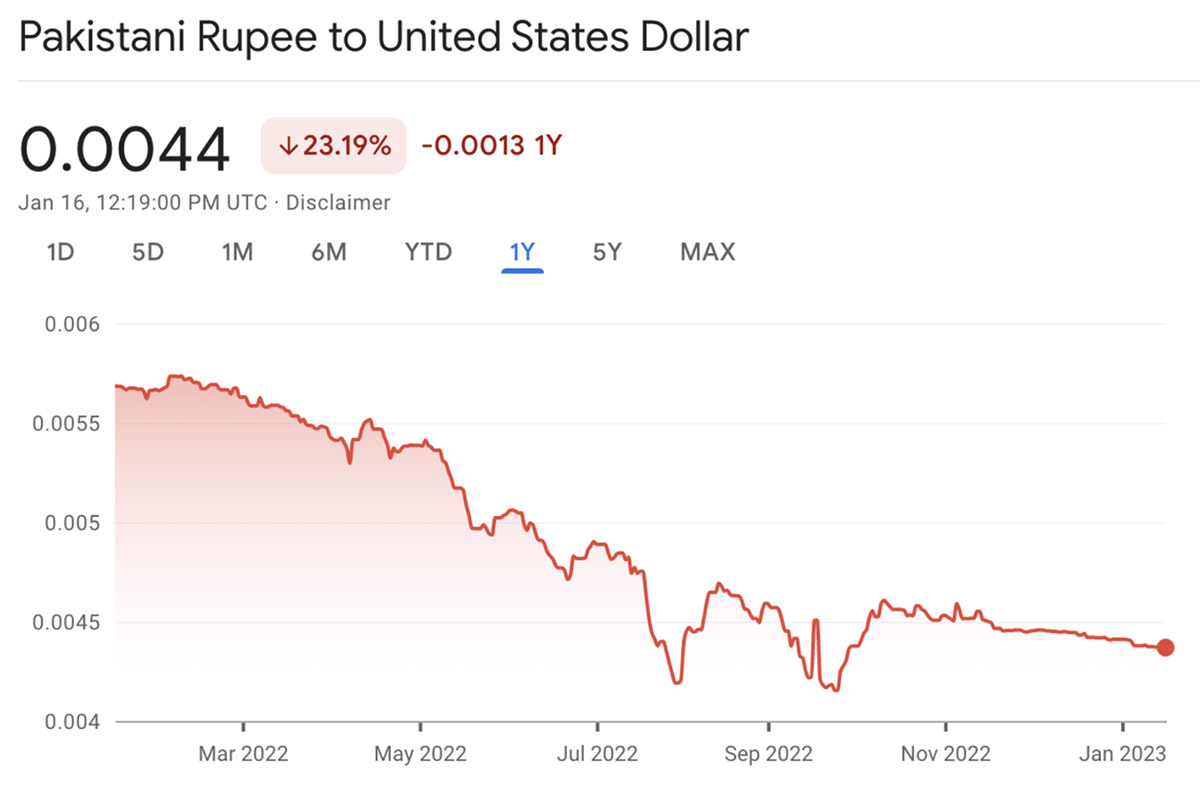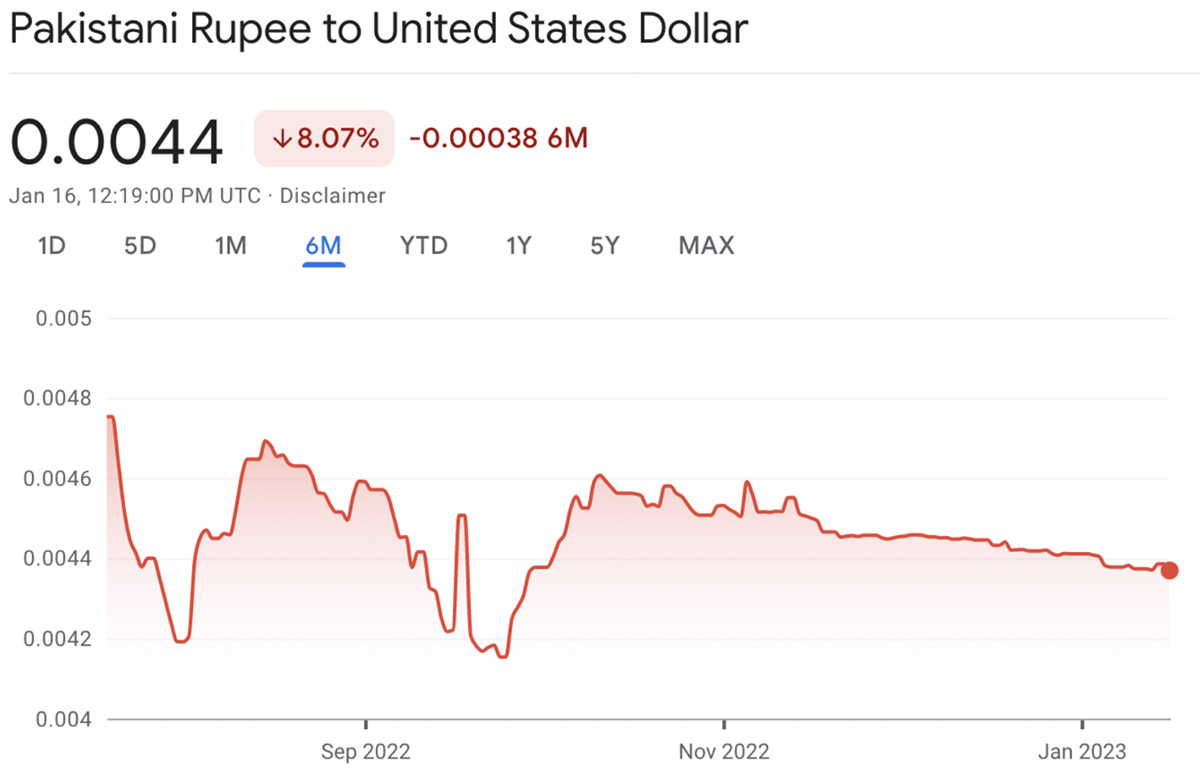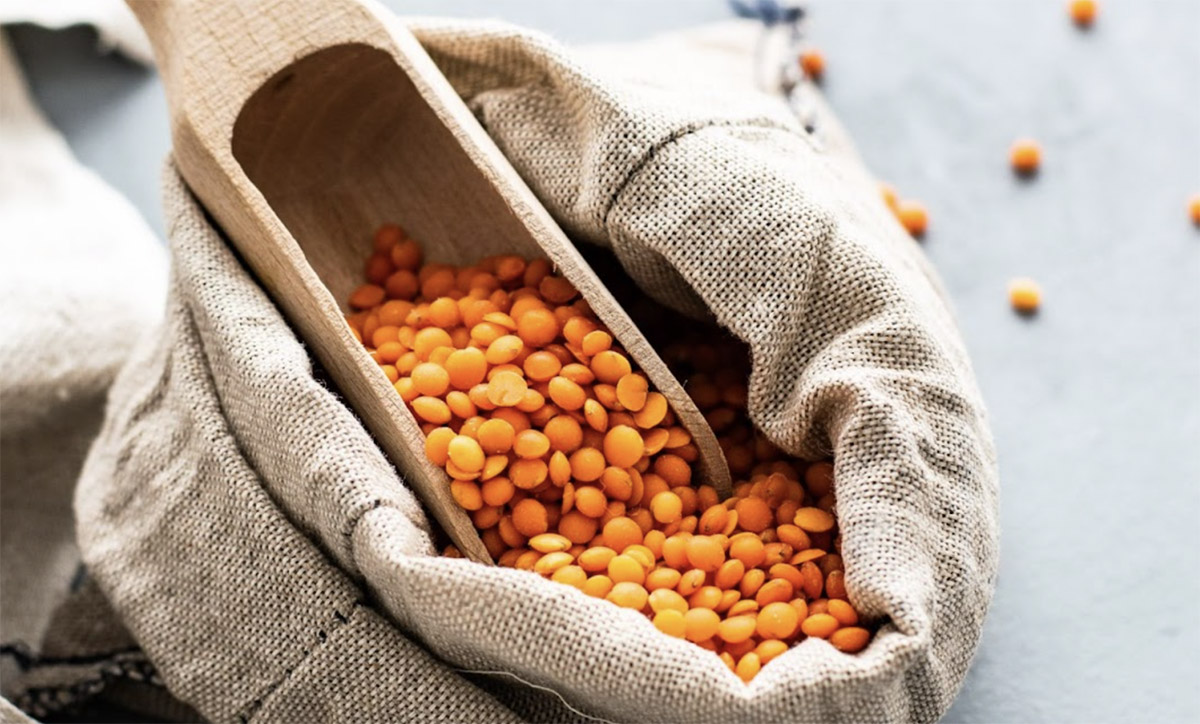January 17, 2023
Dwindling foreign exchange reserves have put Pakistan's ability to guarantee imports in danger. Is a solution on the horizon? Luke Wilkinson investigates.


Pakistan's foreign exchange (forex) reserves have hit an eight year low in the last week, $11.4 billion in total — only enough reserves to fund around three weeks of imports. The crisis has put the country’s economic stability in grave danger, leaving it in need of international financial aid.
Among a long list of worries, the lack of reserves could reduce Pakistani capacity to import pulses from abroad as Ramadan approaches.
The current devaluation of their foreign exchange reserves – the financial assets that it holds abroad – means that Pakistan is at risk of not being able to service its foreign debt. The country owes payments to foreign lenders totalling $33 billion over the coming year, and may need to borrow from countries to pay these debts.
The drop in value of Pakistan's foreign assets creates many issues but, where imports are concerned, one of the most important is that the Pakistani rupee is now drastically devalued against the already strong US dollar. The rupee’s value has dropped by 23.19% since this time last year, and has dropped 8.07% over the last six months (as of 16/1/23). As international trade is conducted in dollars, this reduces Pakistani traders’ ability to import goods.


Pakistani Rupee vs US Dollar - One year & 6 Months. Source: Google Finance
Furthermore, banks in Pakistan are now said to be reluctant to provide letters of credit that are a vital part of fluid international trade. This has put a host of industries and sectors into disarray, and has even led to shipping containers being held up at Karachi until payments can be guaranteed.
Since September, Pakistan has been waiting for the balance of a $7 billion bailout package agreed with the International Monetary Fund (IMF) in September. The IMF’s conditions for receiving this financial aid have yet to be met and the release of the money is pending a review.
The State Bank of Pakistan (SBP) governor Jameel Ahmed has attributed the sudden drop in reserves to a recent repayment of commercial loans adding up to over $1 billion, but they have also received $500 million in loans to help offset that payment. Ahmed also cites the summer’s disastrous flooding, skyrocketing inflation and rising fuel prices as a result of the war in Ukraine as contributing factors to Pakistan’s dire financial outlook.
Dr. Adeel Malik, Globe Fellow in the Economies of Muslim Societies and Associate Professor at St. Peter’s College, Oxford, suggests that this breakdown of Pakistan's economy is a result of structural issues, and is part of a pattern of previous financial crises.
“This is a country that has suffered from a continuous current account deficit,” says Malik. “In the early 2000s there was a lot of money flowing in, then the 2008 global financial crisis hit — huge crunch and current account deficit. They go to the IMF to get additional funding, get back on track and then in 2013 there is another crunch and they go back to the IMF again.
"So you have a model of debt-financed consumption where the country is exporting much less compared to its potential and financing much of its consumption through overseas investments and flows.”
But what has led to this particular crunch, and the continued devaluation of the rupee? Malik suggests there are a few important geopolitical shifts that have converged to set the crisis in motion for countries like Pakistan and Egypt, who are suffering a similar forex crisis of their own.
“Firstly the rising oil prices, as they (Pakistan & Egypt) are net oil importers. Then global commodity prices rose in the wake of the Ukraine conflict. The US Fed (US Federal Reserve Board) increased its interest rates, which means that if these countries were to raise international capital, they would have a hard time because a lot of the private investors would much rather invest in the US stocks, which give better and more secure returns. A sudden change in the international environment has put a pressure on the currency because the inflows are not enough to finance reports."
Fuel costs are no doubt a serious drain on Pakistan’s finances. In November, Aninews reported that the country was spending 66% of its forex reserves on fuel alone, and that their energy costs have risen considerably; coal imported from South Africa for use in Pakistan’s power plants is said to have risen in price by nearly 130% in the last year.
Within Pakistan, inflation has reached dizzying heights for certain food products. For instance, by December, the price of onions had risen 441% year on year. During the same period, the price of pulses is thought to have risen by 41%. The possibility of a dwindling pulse supply is likely to only increase this price inflation.
AgPulse Analytica, an India-based provider of statistical analysis of global agricultural markets, details to the GPC that 30% of all chickpeas, 95% of peas, and 100% of lentils consumed in Pakistan are imported. While Pakistan does not import any mung beans, 70% of remaining pulse classes not mentioned above are imported. With Ramadan approaching, this time of year is usually one for stocking up on pulses, with increased imports from countries like Australia and Canada. Right now, says AgPulse Analytica, pulse imports are reduced compared to this time last year.

100% of Pakistan’s lentils are imported
Speaking with the GPC in early 2022 on the question of stocking up for Ramadan, Pakistani pulse trader Hunain Khatri suggested that pulse stocks in the country were low, and that imports would have to rise in 2023: “…by early December, we only had around 1,500 containers’ worth of stock in our warehouses. That probably won’t last past the end of January. Come February and March, Pakistan will have to start buying aggressively.”
Without letters of credit from banks, Pakistani pulse traders may face an obstacle to importing the pulses they need. With such a significant amount of Pakistan's pulses being imported, any impediment to imports is likely to leave an extremely significant hole in Pakistan's supply at a time when they would usually be bringing in extra stock. GPC’s Executive Vice President and Chairman of Agrocorp, Vijay Iyengar, also noted in a recent interview that by the end of the year, Pakistan was one of a group of countries, alongside Egypt, Sri Lanka, and Bangladesh, whose demand had contracted as a result of foreign exchange issues.
It appears that the most important thing for Pakistan is to try to resolve its forex issues by obtaining foreign funds, which means the $7 billion to come from the IMF or a loan from a friendly country is the likely next step in the situation. Although the Pakistani government has not met the IMF’s conditions for receiving this money, Dr. Adeel Malik believes that it is nevertheless is very likely to arrive.
“I think that it will happen because the way in which international finance is working in the context of Pakistan is that the IMF programs are becoming important geopolitical operations. The US has an important stake and it wants the country to remain on track as far as IMF commitments are concerned.”
While half of the $7 billion was received back in August 2022, the other half of the funds are yet to be released, as a review of the package continues. Friendly countries to Pakistan such as China and Saudi Arabia often offer financial aid but these countries are said to be waiting on the IMF to approve the release of funds.
If financial aid does arrive soon, Dr. Adeel Malik suggests that Pakistan's economy still may take some time to stabilize: “I think it's going to take several months before you are in a situation where the IMF program is restored, there's political stability, and then reserves continue to build up.”
On January 12, the United Arab Emirates (UAE) agreed a $1 billion loan to help bolster Pakistan's reserves, also agreeing to ‘roll over’ a previous $2 billion loan. This will no doubt come as a relief to Pakistan; first finance minister Miftah Ismail calls the decision, "great news to Pakistan”. We will see over the coming weeks whether this influx of funds and others that may arrive will be sufficient to calm the crisis.

Foreign exchange reserves / Pakistan / Ramadan / floods / rising oil prices / AgPulse Analytica / Hunain Khatri / Vijay Iyengar
Disclaimer: The opinions or views expressed in this publication are those of the authors or quoted persons. They do not purport to reflect the opinions or views of the Global Pulse Confederation or its members.